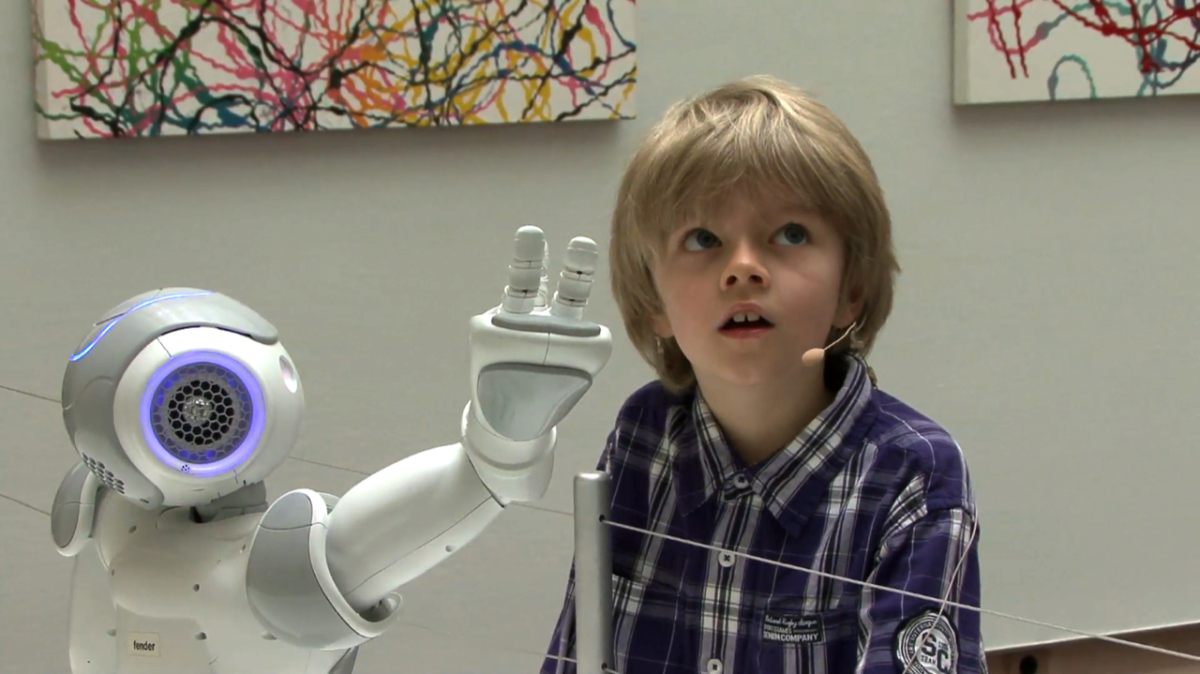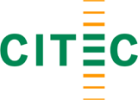Forschung & Projekte - Inkrementalität in Mensch-Roboter-Interaktion

07/2013 - 11/2016 (PhD extension until 2018)Interactive coordination and incrementality in human-robot interaction. A robot as a museum guide.
The typical interaction of a human user with a social robot is limited in that most systems have only limited possibilities to coordinate their actions with those of the human user. This often leads to situations where humans and robots are involved in different steps of an action sequence. In such moments, robots based on pre-programmed language and action structures continue their activities without considering the current participation status of the user. The project addresses this problem and explores how an autonomous robot can engage in small-step interactive coordination with the human user. The robot will be equipped with capabilities for permanent observation of human behaviour and on this basis enable incremental processing, repair strategies and empirically based perception-action loops. In doing so, the fundamental question will be addressed: How can a robot be involved in small-step interactive coordination with a human user?
These questions will be addressed using the example of a museum robot along two thematic foci: (1) The orientation of a visitor to an exhibit; (2) Dealing with the utterances of a visitor. The project is realised in an interdisciplinary team and interaction linguistics and computer science and works in close cooperation with the project "Interaction & Space".
Publications
-
Pitsch, K., Dankert, T., Gehle, R., & Wrede, S. (2017). Interactional Dynamics in User Groups. Answering a Robot's Questions in Adult-Child Constellations. In: HAI 2017, Bielefeld, S. 393-307. [DOI]
-
Dankert, T., Görlich, M., Wrede, S., Gehle, R., & Pitsch, K. (2016). Engagement Detection During Deictic References in Human-Robot-Interaction. In: ICSR 2016, Kansas City, USA, S. 930-939. [DOI]
-
Pitsch, K., Dankert, T., Gehle, R., & Wrede, S. (2016). Referential practices. Effects of a museum guide robot suggesting a deictic 'repair' action to visitors attempting to orient to an exhibit. In: Ro-Man 2016, New York, S. 225-231. [DOI]
-
Pitsch, K. (2016). Limits and Opportunities for Mathematizing Communicational Conduct for Social Robotics in the Real-World? Towards enabling a Robot to make use of the Human's Competences. AI & Society, 31 (4), S. 587-593. [DOI] [Online-Volltext]
-
Gehle, R., Pitsch, K., Dankert, T., & Wrede, S. (2015). Trouble-based group dynamics in real-world HRI - Reactions on unexpected next moves of a museum guide robot. In: Ro-Man 2015, Kobe, S. 407-412. [DOI]
-
Gehle, R., Pitsch, K., & Wrede, S. (2014). Signaling Trouble in Robot-To-Group Interaction: Emerging Visitor Dynamics With a Museum Guide Robot. In: HAI 2014, Tsukuba, S. 361-368. [DOI]
-
Pitsch, K., & Wrede, S. (2014). When a robot orients visitors to an exhibit. Referential practices and interactional dynamics in real world HRI. In: Ro-Man 2014, Edinburgh, S. 36-42. [DOI]
-
Pitsch, K., Gehle, R., & Wrede, S. (2013). A museum guide robot: Dealing with multiple participants in the real-world. In: Workshop "Robots in public spaces. Towards multi-party, short-term, dynamic human-robot interaction" at ICSR 2013, 4 Seiten. [Online-Volltext]
-
Pitsch, K., Gehle, R., & Wrede, S. (2013). Addressing Multiple Participants: A Museum Robot's Gaze Shapes Visitor Participation. In: ICSR 2013, S. 587-588. [Online-Volltext]
A project of
the Interdisciplinary project IP-18 of the Cluster of Excellence "Cognitive Interaction Technology" (CITEC, EXC-277), Bielefeld University.

Project team
Team
- Prof. Dr. Karola Pitsch (PI)
- Dr. Sebastian Wrede (PI); Cognitive Systems Engineering
- Timo Dankert; Cognitive Systems Engineering (2013 - 2018)
- Michael Görlich; Cognitive Systems Engineering (2015 - 2016)
- Raphaela Gehle; Interactional Linguistics (2013 - 2015)
In cooperation with:
Bielefeld Historical Museum
Art Gallery Bielefeld

